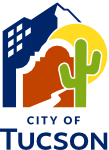Microfiche records prior to 2006 have not been completely digitized and may not be available yet on PRO. If you can not find what you are looking for please submit a records request.
Case: T19DV04008
Case Details
Entered Date:
05/15/2019
Applicant:
JOHN GILES JR & LINDA A BARTLETT % MARIA ANTONIA ZAMORA JT/RS
Description:
Chickens for the past few year, but now is building a larger chicken coop and now has an mite infestation. It has affect the surrounding homes an we can not go in our own backyard because there are so many mites everywhere. Health concern.
Completed Inspections
Case Status: COMPLIAN
Case Number: T19DV04008
Case Description: ANIMAL ISSUES
Total Completed Inspections - 2
| End Date | Description | Inspector | Results | Comments |
|---|---|---|---|---|
| 06/12/2019 | INSP - INITIAL CODE ENFORCMENT | LOPEZ | Approved | AFTER INSPECTION DID SEE THAT CHICKEN COOP WAS EXCCEDING THE SIZE ALLOWED WITH-OUT SETBACKS AND PERMIT. WILL BE ISSING NOTICE |
| 07/30/2019 | INSP - FOLLOW UP CODE ENFORCE | LOPEZ | Approved | VIOLATION ABATED MEETING SETBACK AND ITS A CAGE NOT A COOP, WILL BE CLOSING THIS CASE |
Outstanding Case Activity Conditions
| Date | Name | Approved |
| 06/12/2019 | 6.6.5. URBAN AGRICULTURE USES AND ACTIVITIES: E. Keeping of Food Producing Animals 1. This section applies to food producing animals as defined in Section 11.4.7, Animals, Food Producing. a. The keeping of food producing animals shall be conducted in accordance with this Section 6.6.5.E and the Tucson Code, Chapter 4, Animals and Fowl. In the case of a conflict, the standards of this Section shall control. b. This Section 6.6.5.E does not apply to: (1) The keeping of livestock; or, (2) Animals not defined as food producing animals such as pigeons, parrots, dogs, cats, and fish. c. Uncastrated male miniature goats older than 5 months and male fowl are prohibited. 2. The keeping of food producing animals is permitted as an accessory use to: a. Permitted residential use in residential and nonresidential zones; b. Accessory Community Garden per Section 6.6.5.A; or, c. Accessory Urban Farm per Section 4.9.2.E.1.b. 3. Maximum Number of Food Producing Animals Permitted a. Animal Units as defined in Section 11.4.2 are used as a basis for determining the maximum number of food producing animals permitted. b. Animal units are assigned as follows: Food Producing Animal Units per Animal Chicken 1 Duck 2 Turkey or Goose 4 Miniature Goat (female or neutered male only) 5 c. The calculation for the maximum number of animals permitted is the lesser of either two (2) Animal Units per 1,000 square feet of the lot size or the maximum total Animal Units of the lot size as follows: Lot Size Maximum Number of Total Animal Units Permitted Less than 16,000 sf 24 16,000 sf to 143,999 sf 36 144,000 sf or more 48 d. It is recommended that miniature goats be raised in pairs or small groups for their well-being. e. Exemptions: The following are exempt from this Section 6.6.5.E: (1) Animal Production, General Farming, or Stockyard Operation Uses or when an Accessory Shelter or Structure in the RH, SR, SH, RX-1, IR, or MU zones. These uses must comply with Chapter 4 of the Tucson Code; (2) Non-profit, agriculture-related organizations, such as the 4-H Club and Future Farmers of America. These organizations must comply with Chapter 4 of the Tucson Code; or, (3) Rabbits, rodents, and invertebrates, such as worms. These must comply with Chapter 4 of the Tucson Code. f. Requests to increase the number of permitted food producing animals are considered in accordance with Section 3.3.4, 50' Notice Procedure. 4. Location and Setback Requirements a. Food producing animals and shelters are prohibited in the buildable area extending the full width of the lot between the principal building and the front street lot line. Food producing animals and their shelters are permitted in other perimeter yards. b. Animal shelters six feet or less in height and sixteen square feet or less in area are not required to setback from side or rear property line, but are required to be behind the principal building and at least 20 feet from the dwelling unit on an abutting property. c. Animal shelters more than six feet in height and greater than 16 square feet in area must be set back in accordance with Section 6.6.2.D. Shelters shall also be at least 20 feet from the dwelling unit on an abutting property. Exceptions: A setback is not required from property lines abutting alleys or other types of rights-of-way or easements or when adjacent to a nonresidential use. d. Requests to reduce the setback requirements for animal shelters are considered in accordance with Section 3.3.4, 50' Notice Procedure, Section 3.11.1, Design Development Option, or Section 6.6.5.E.7,Existing Shelter Exemption. 5. The maximum permitted height of an animal shelter is 12 feet. 6. Food, water, and other items that may attract coyotes, bobcats, javelinas and other predators must be kept in a secure location. 7. Existing Shelter Exemption a. A shelter for food producing animals that has existed prior to the effective date of the ordinance in a location that does not comply with the food producing animal shelter setback standards set in the ordinance may apply for an exemption from the affected perimeter yard setbacks and dimension standards of this section. | Not Approved |
Completed Activity Special Conditions
Case Description - ANIMAL ISSUES
Case Number - T19DV04008
Case Status: COMPLIAN
Total Completed Case Activity Conditions: 4
| Date | Name |
| 07/10/2019 | CONTACTED BY PHONE |
| 06/25/2019 | RETURNED MAIL |
| 06/12/2019 | CONTACTED BY MAILING |
| 06/12/2019 | NOTICE OF VIOLATION ISSUED |
